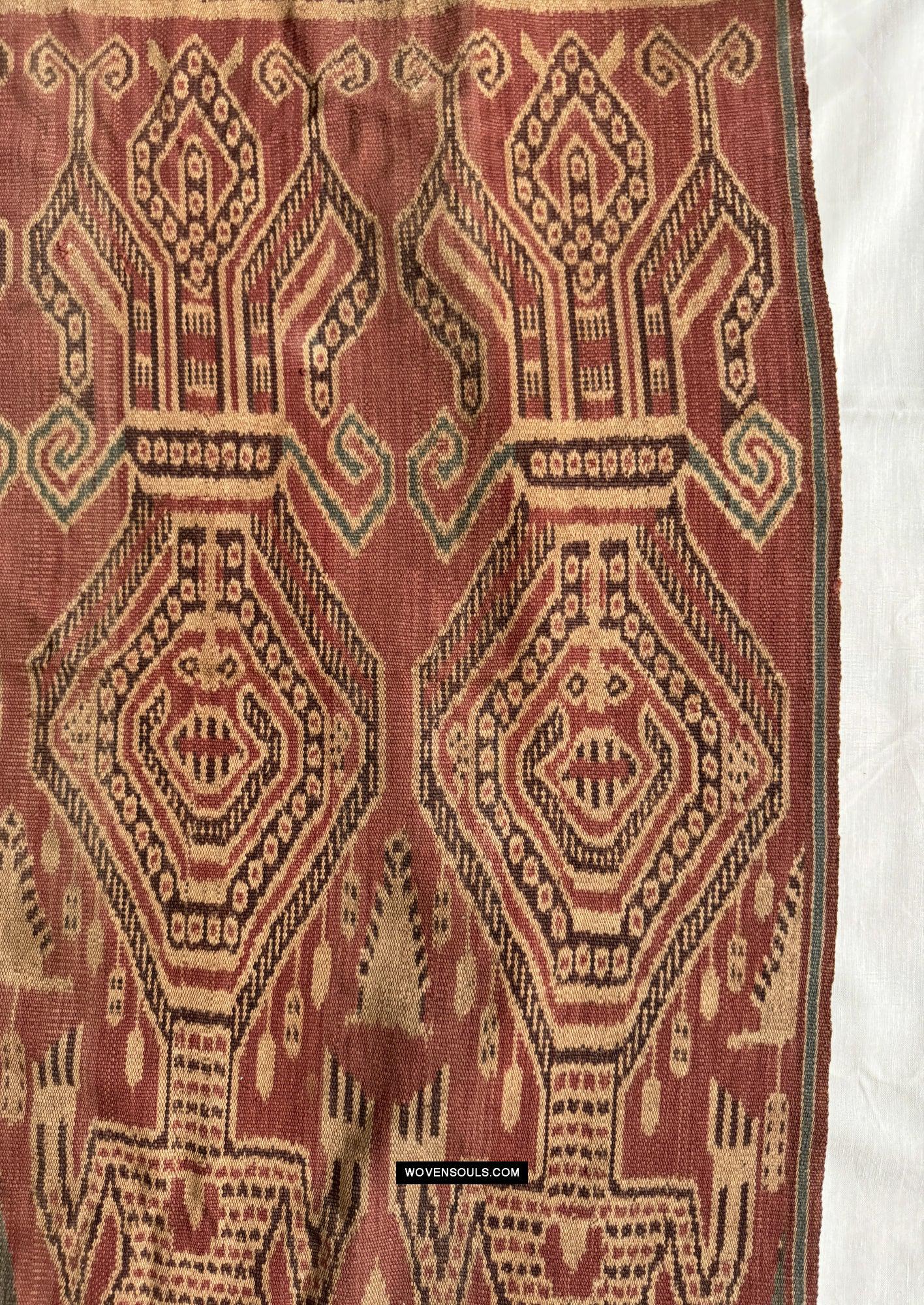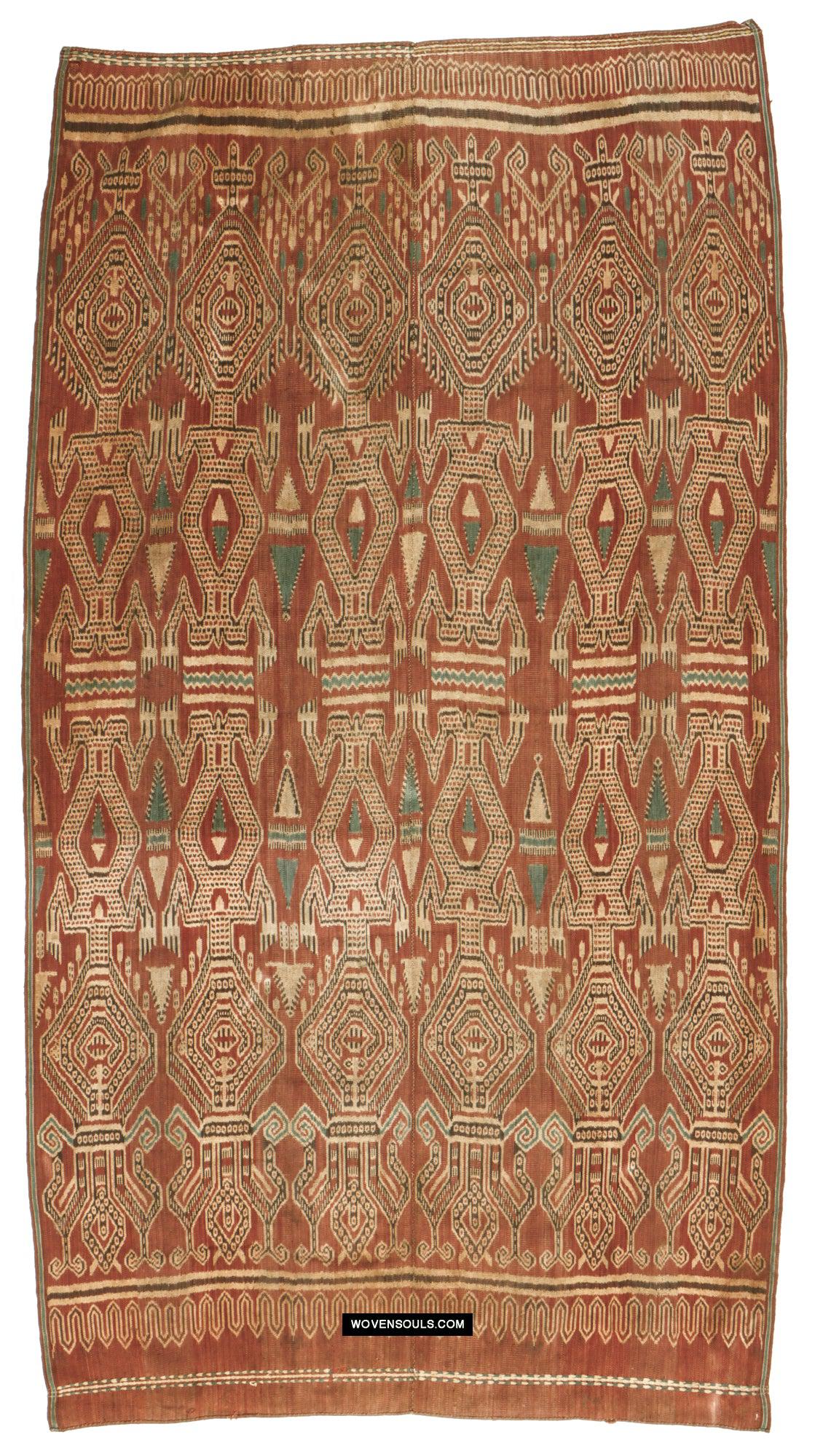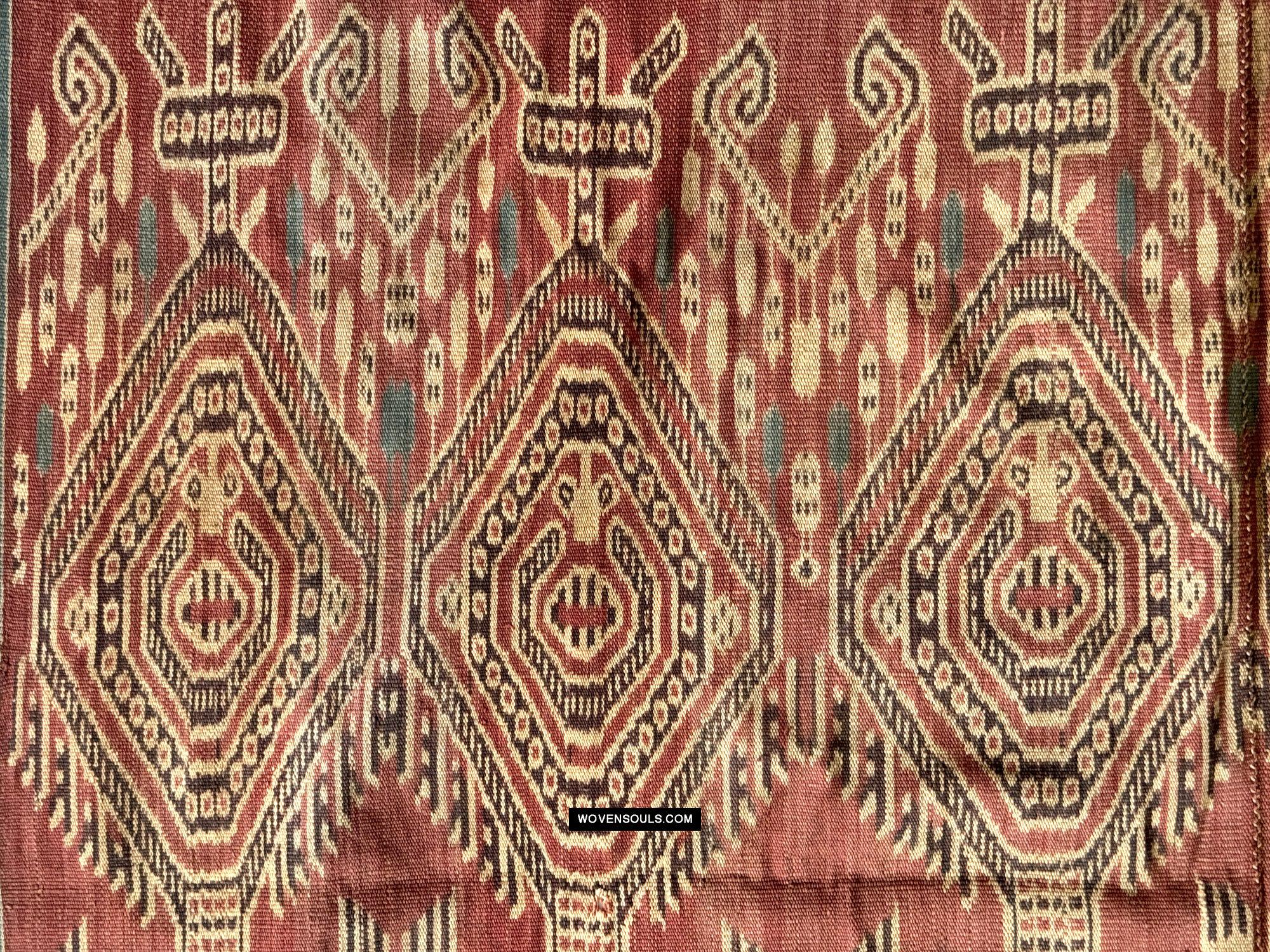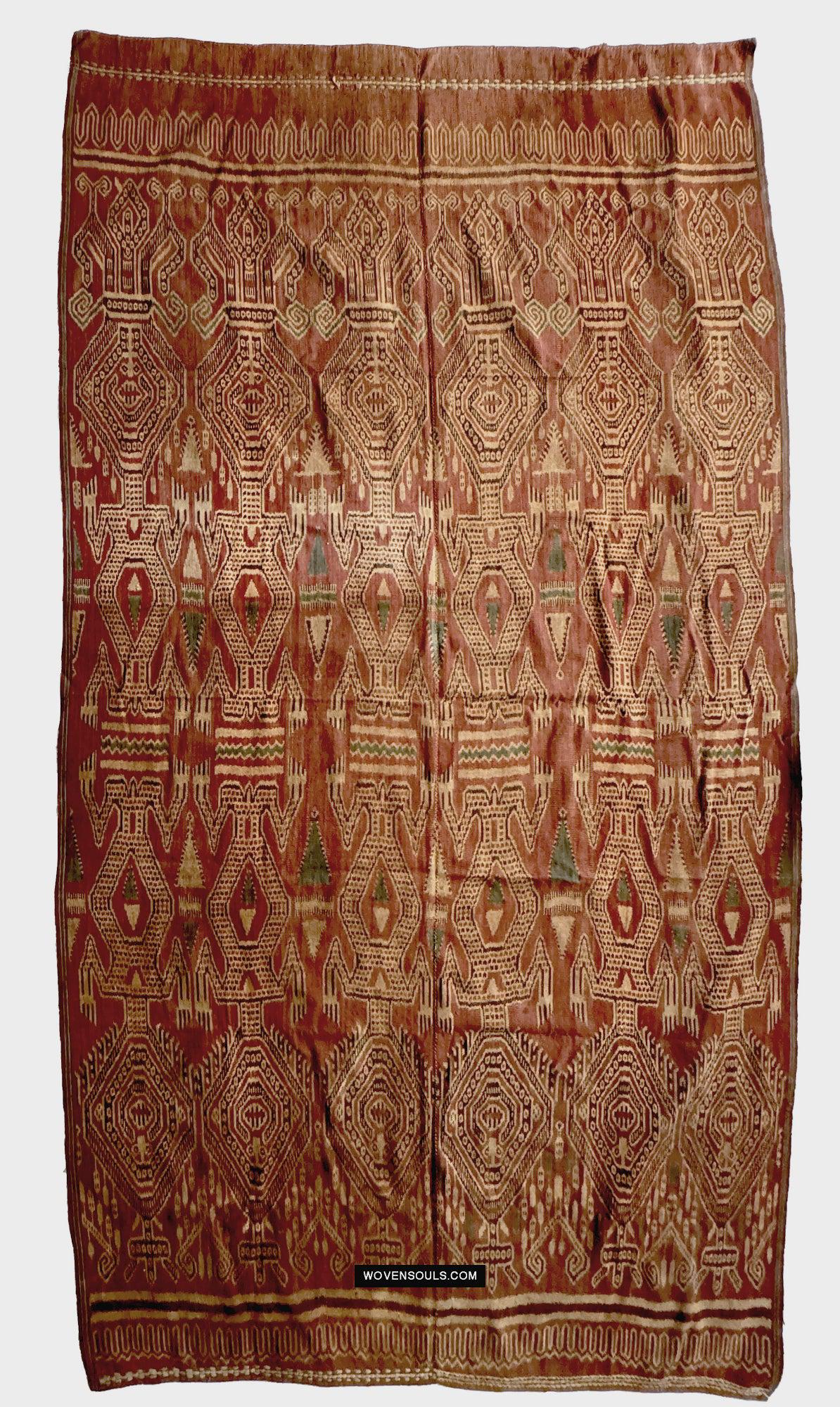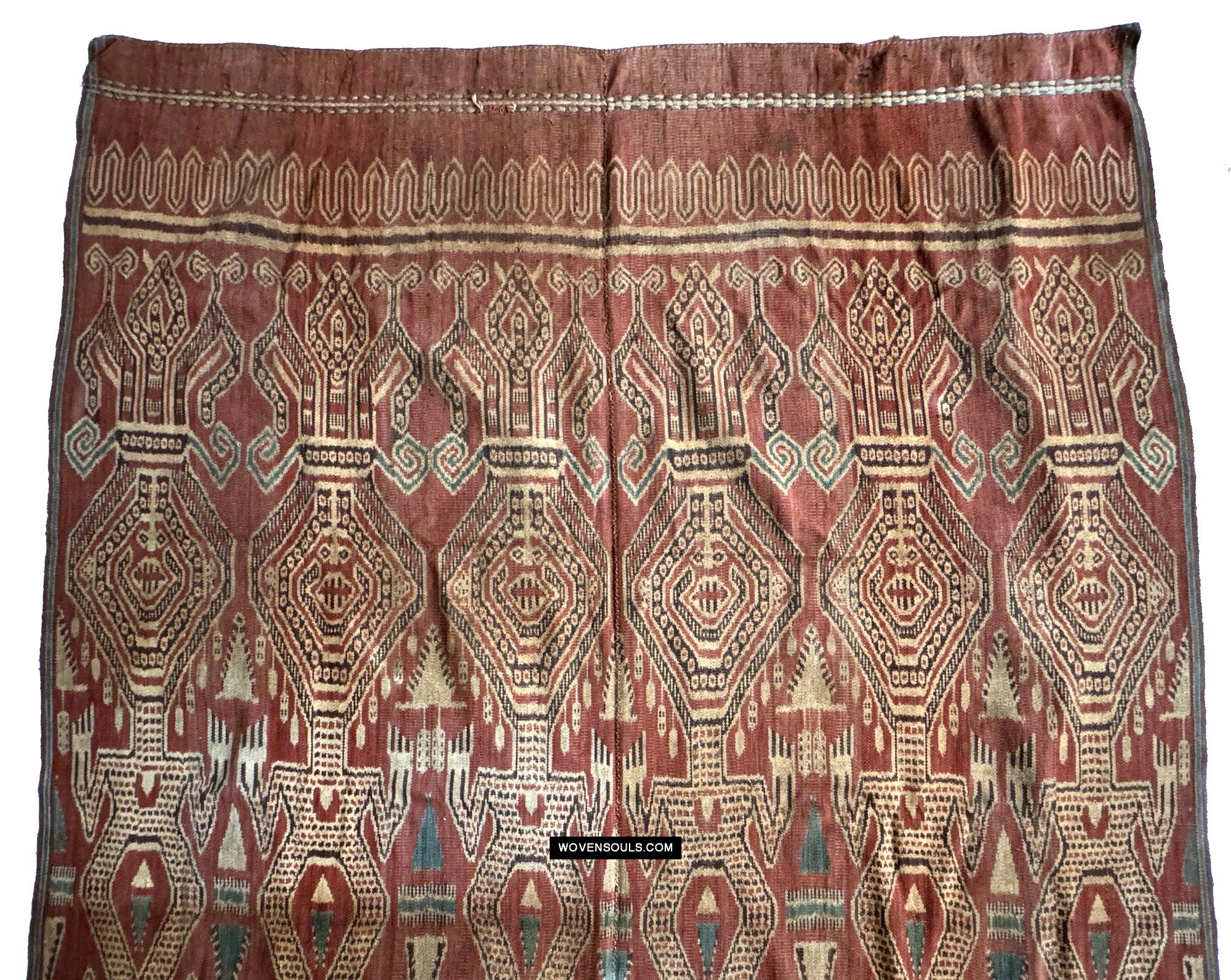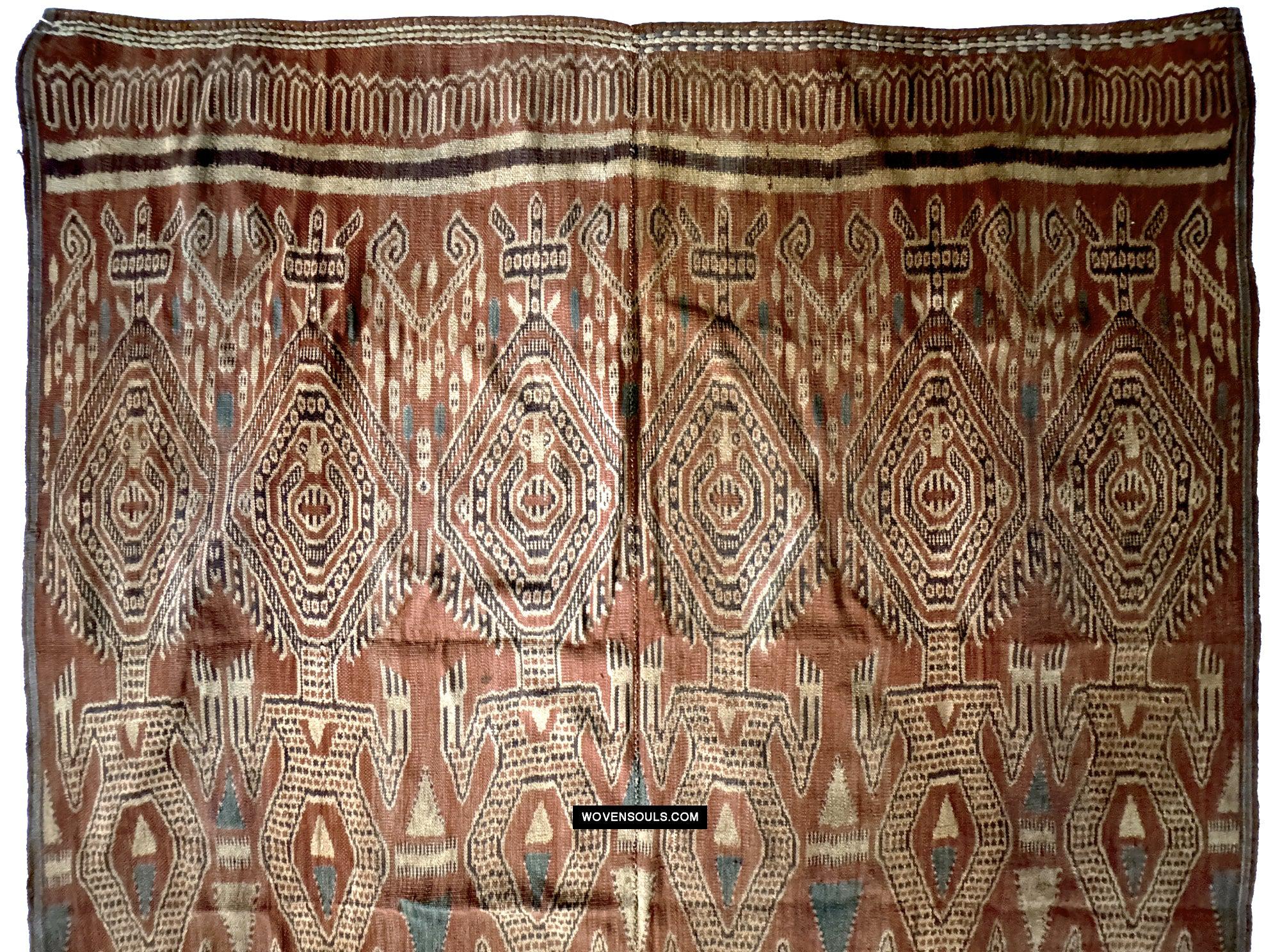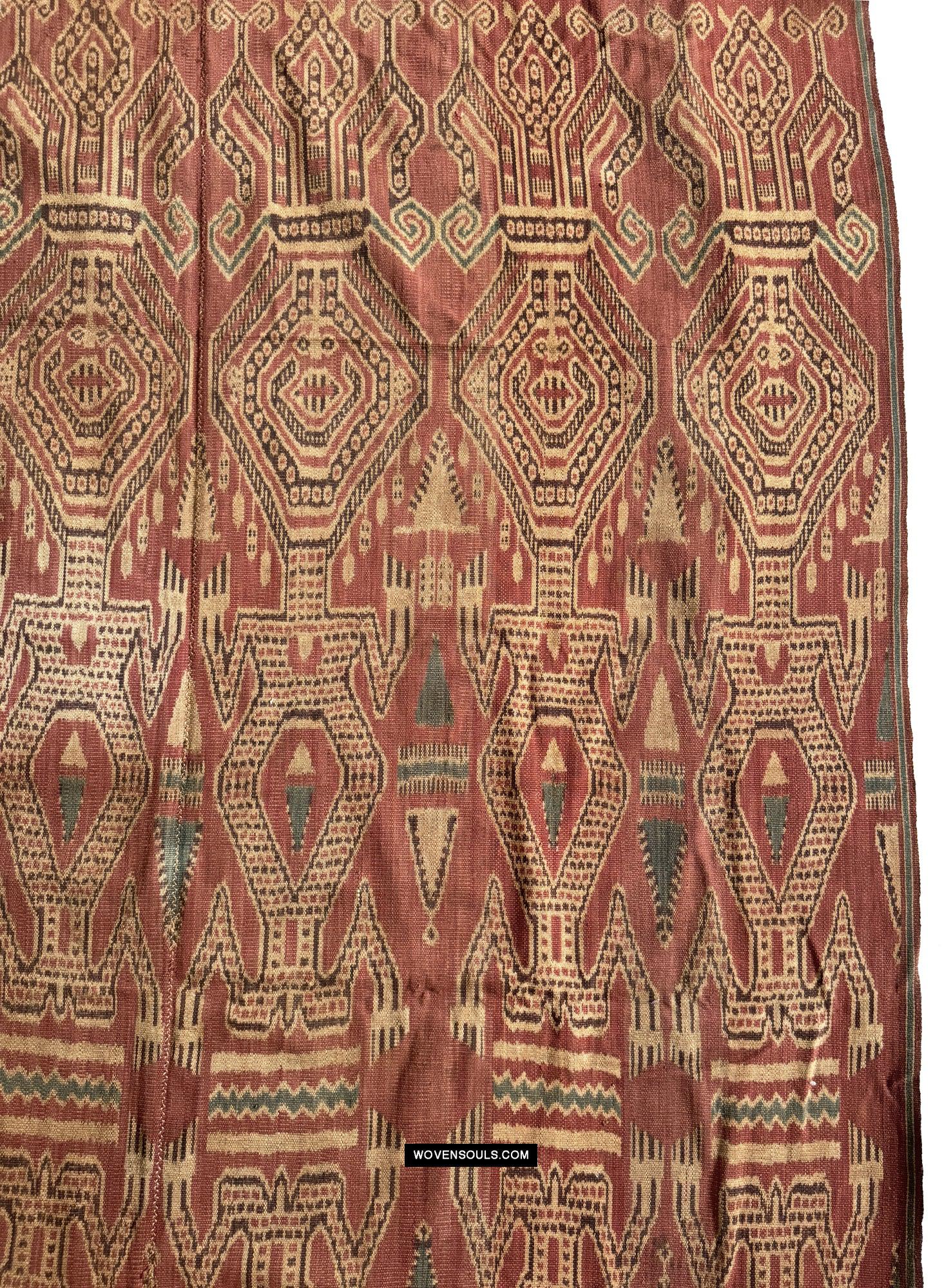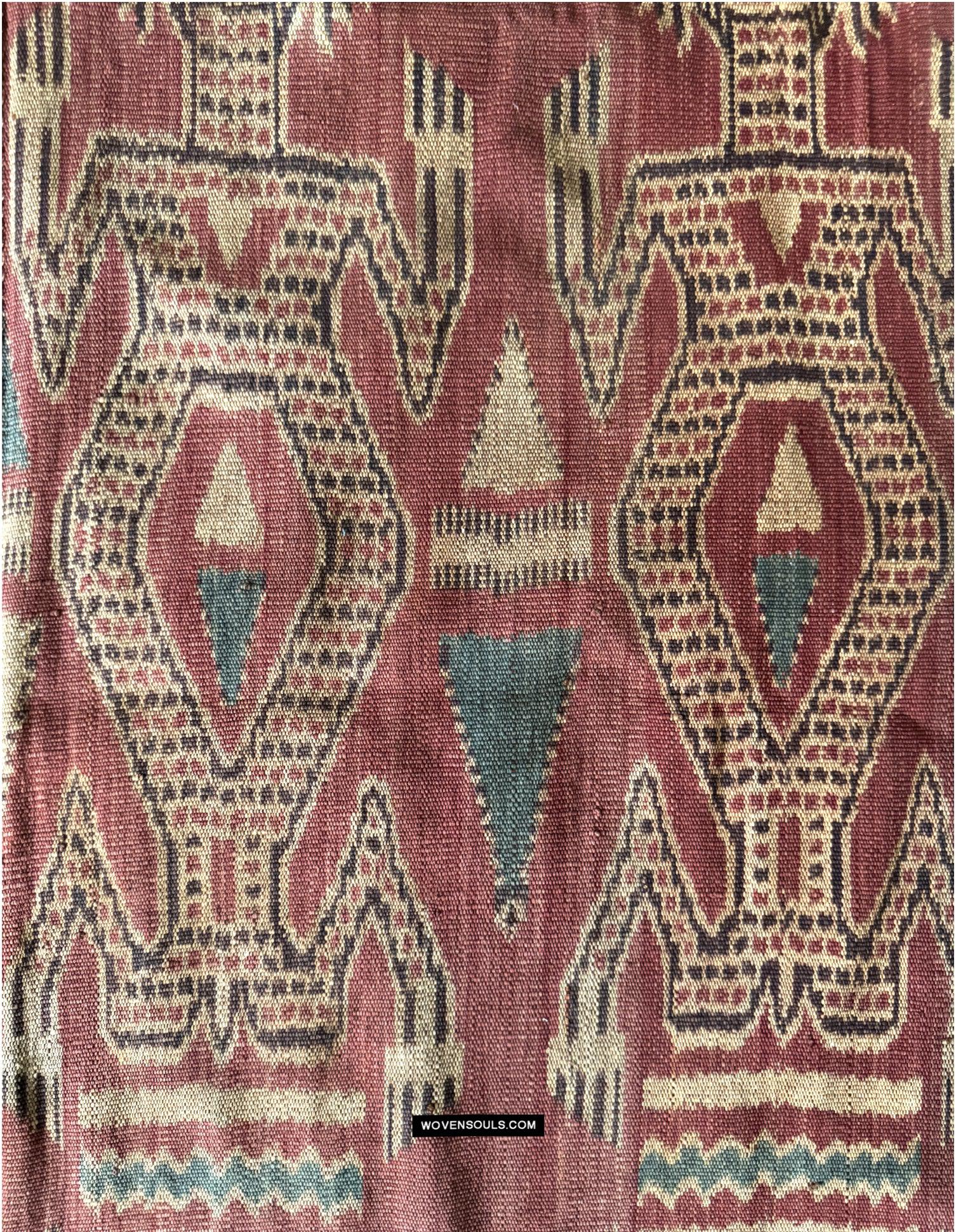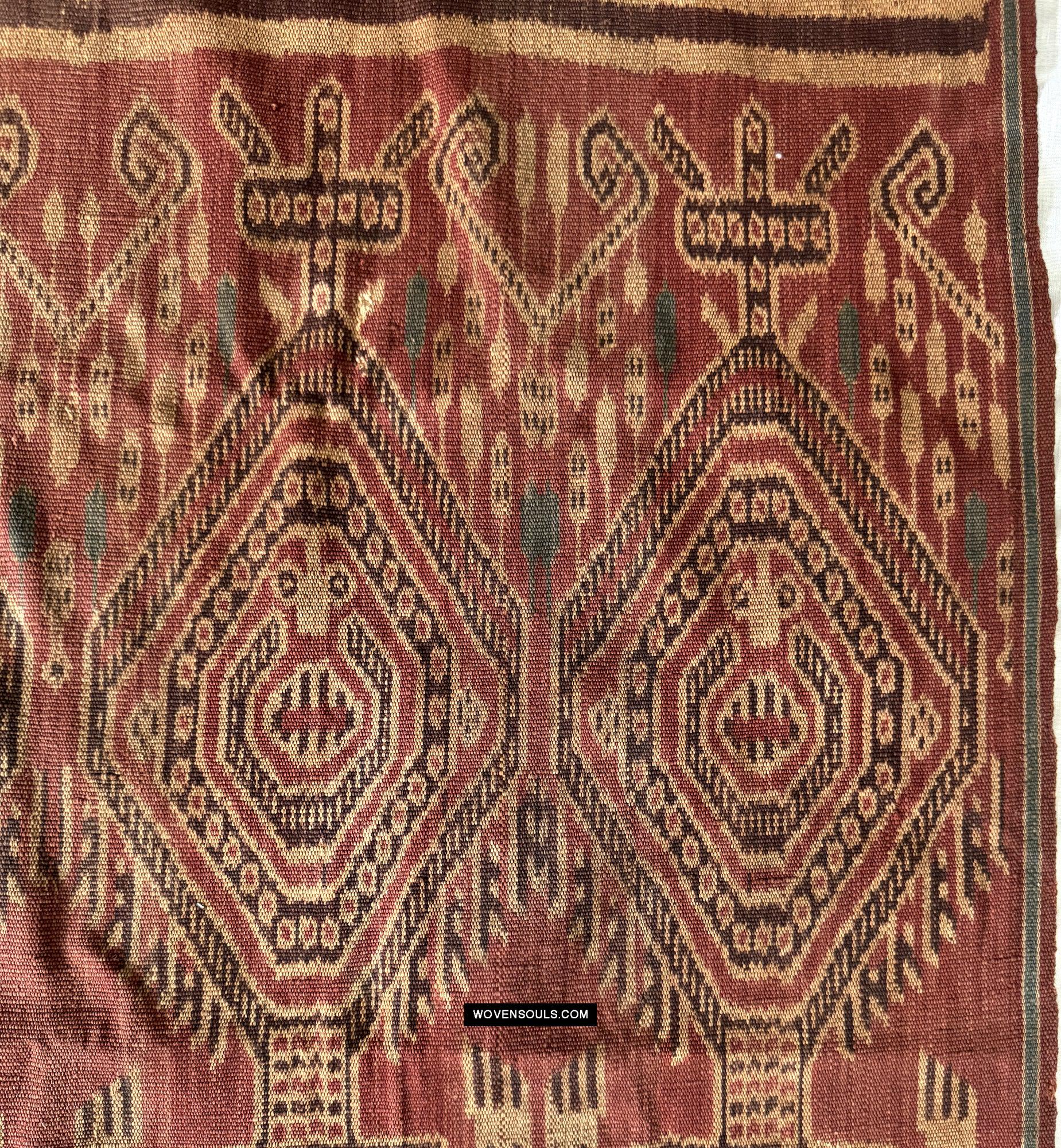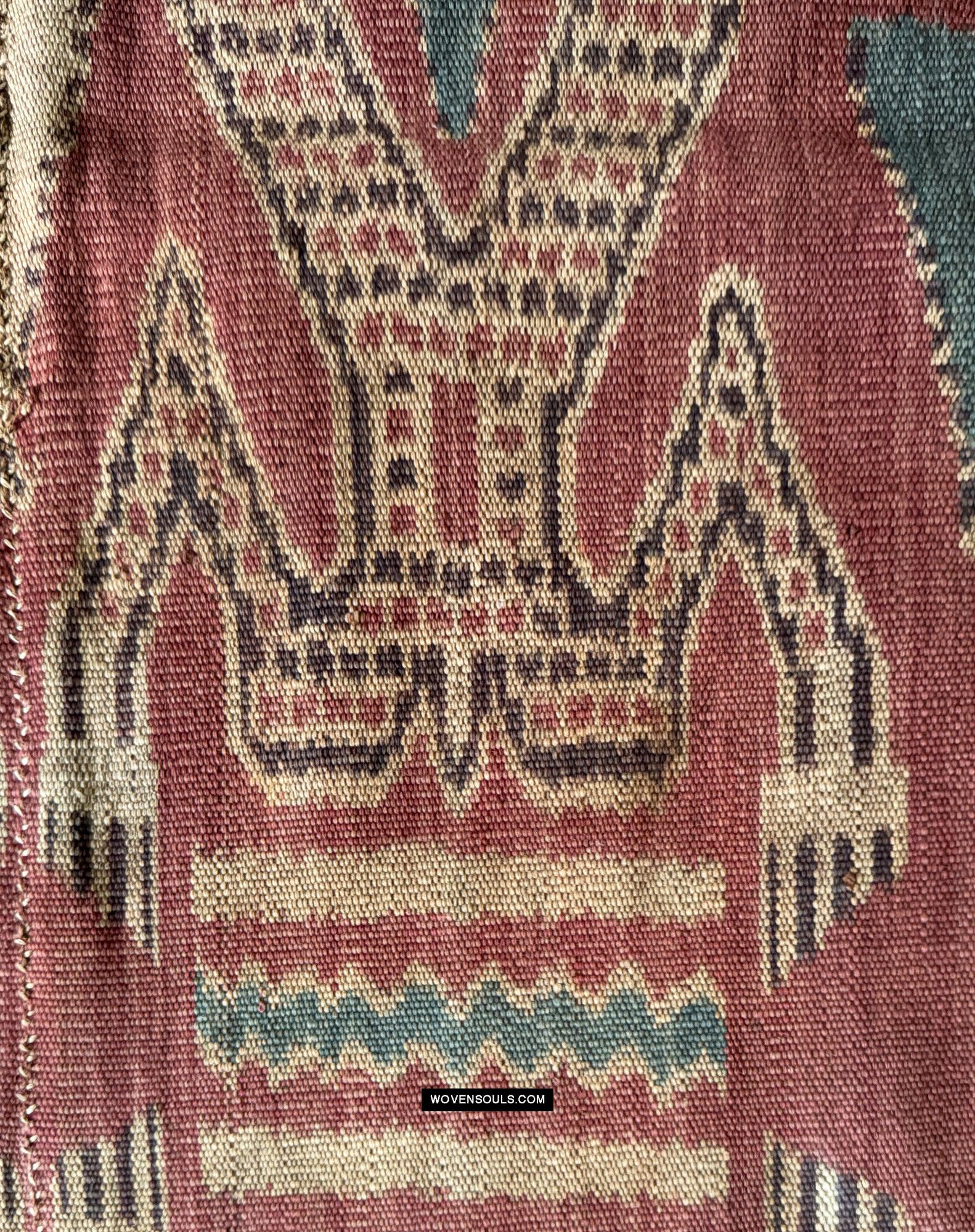1829 Antique Iban Ceremonial Ikat - Buah Nising Pattern
e Antique Iban Ceremonial Ikat Pua Kumbu
Quite likely the Buah Nising Pattern
***
Among the Iban, textiles are treasured as they are more than just objects made of fibre.
In some cultures, such as the Iban, textiles have played a major, if not central role, in all the ceremonies surrounding the important events in life. Power structures among women were based on dyeing and weaving skills. Textiles were perhaps the most important materials owned by families.
Ikat textiles are among the hardest to make, as the tie-dye is done on the unwoven threads before they are woven into cloth. So with a design in the weaver's imagination, the thread is dyed in sections as per the pattern that is required to be created. This takes immense precision and calculation. So when we note that these textiles were made decades ago in the rainforests of Borneo - Kalimantan, Sabah & Sarawak, there is a sense of awe for the creators.
Further, textiles themselves were believed to have the power to connect to the spirit world. The motifs, the dyes and the complexity of the weaving - all factors that were a direct result of the weaver's skill and experience - contributed to the power held by a textile.
Only textiles with certain features could be used during the most important community ceremonies and the weavers of these therefore enjoyed an elevated status of prestige.
So to study an Iban textile, requires us to focus on patterns, motifs, complexity and lastly and equally importantly - the dyes. The process of dyeing enjoys a far greater role in the value chain of production of Iban textiles than it does in any other group of textiles.
Size: 218 x 119 cm
MY NOTES ON THIS IKAT (these are a work-in-progress and will I will continue to add more over time):
- The pattern on this ikat is similar to Demon Figure Pattern (buah Bising) Fig 28 on page 110 of "Iban Ritual Textiles" by Traude Gavin.
- Nising is the possessor as well as the guardian of the head hunter's most coveted prize - the trophy head.
- This pattern is likely an old pattern of high rank.
- A total of 12 figures, with six on one end and the other six on the other end, feet at the centre of the textile. The rows are separated by horizontal lines that are themselves very hard to create in Ikat weaving tie-dye process.
- Some variations in both groups of figures. In the first group, the chins are lined with black dangles while in the second group that dangles are white and patterns are different. Secondly, the headdresses of both groups are different.
- Bodies patterned with rows of tiny black dots alternating with rows of tiny rust dots.
- Note the presence of BLUE lines
- Note the 'rice grain' fillers
- Note the fillers of concentric circles in red & white against the black background rendered with neat precision. These rings are seen in several in the landmark books on the subject and often have some misalignment. I have rejected 3 such pieces that were offered to me simply because the rings were haphazardly done - maybe I was wrong - but I think this precision is a sign of how well the weaving has been executed. In this asset, the rings have been done very well.
- Note also the horizontal bands that are signs of mastery of Ikat weving.
- In creating Ikat, to have the black contained within a tiny area and not spillover into adjacent areas is itself a remarkable feat. Then, over and above that, to have all the dots across the breadth of the textile aligned in neat rows is an extraordinary feat.
- Further, the bodies all have not one but two borders - one in black and one in white.Several perfectly executed blue triangles (that likely represent trophy heads?). Each of these has a border of minute black and white dots.
- The vertical edges do not have a border (that is present in most pua textiles but is planned separately.) However there is blue border that is a part of the primary textile itself.
- Well done horizontal lines at both Selakoh ends
Amazing piece! Created with immense love, discipline and creativity.
CLICK TO SEE THE COMPLETE COLLECTION OF IKAT PUA KUMBU
This item has spent a lifetime being used for the purpose of its creation with the original artist/user. Signs of this life lived heartily may be present on the piece in the form of stains, thread loss, loose threads, holes, tears, color run and other imperfections. Therefore the condition must be assumed to be “not” perfect. More photos of such imperfections will be provided on request.
***
